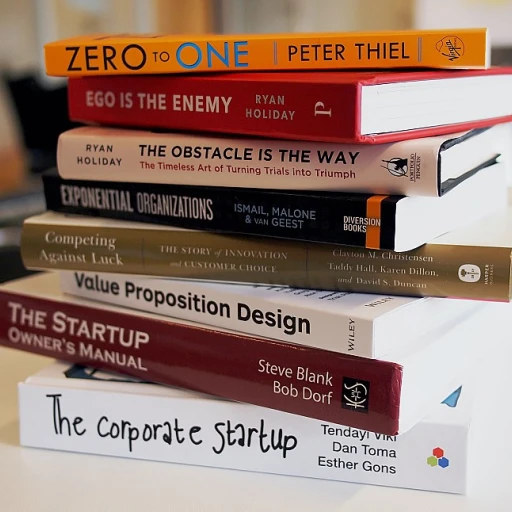
Understanding the Role of CHRO in Manufacturing
The CHRO's Pivotal Role Within Manufacturing
In the intricate world of manufacturing, the Chief Human Resources Officer (CHRO) stands as a linchpin, ensuring the alignment of human resources operations with organizational ambitions. The CHRO's strategy is not merely about managing personnel; it involves orchestrating a symphony that harmonizes the workforce with the company's broader manufacturing goals. This role demands a blend of strategic foresight and tactical execution, which involves tapping into innovative human resources practices that correspond with manufacturing's unique needs. The manufacturing landscape is rapidly evolving, and with it, the expectations from the CHRO. Each step—from understanding and integrating account based (ABM) strategies into human resources practices to managing the team's accounts and embracing agility in manufacturing—requires data-driven insights and strategic foresight. An ABM strategy in the HR context could mean the CHRO leveraging intent data and personalized engagement to court specific high accounts. Ensuring that the HR team is adept at creating campaigns tailored to resonate with the manufacturing sector’s hiring needs can drive both efficiency and innovation. To meet the broadening duties, the CHRO must foster a culture that encourages innovation and efficiency. This involves aligning HR practices with manufacturing ambitions—not in isolation but by working closely with sales, marketing, and production teams. The convergence of technology and HR practices is inevitable. It amplifies the call for CHROs to be more technologically astute, using tools for workforce optimization and to adapt quickly to market demands. By embracing an account based approach, the CHRO can transform how HR contributes to manufacturing's local and global aspirations, facilitating the company's movement towards achieving both operational excellence and market relevance.Aligning HR Practices with Manufacturing Ambitions
Adapting HR Practices to Manufacturing Goals
In the quest for manufacturing excellence, aligning HR practices with organizational objectives requires a strategic approach that appreciates the unique dynamics of the industry. Given the emphasis on efficiency and precision, crafting a human resources strategy that supports these ambitions involves a multi-faceted approach.
First, it's essential to streamline recruitment processes to attract high-caliber candidates who possess not only technical expertise but also align with the company's strategic vision. This involves tailoring recruitment campaigns to appeal to candidates experienced with lean manufacturing and other industry-specific methodologies. Utilization of account-based marketing (ABM) can be particularly effective here, as it allows HR teams to target specific high-value professionals analogous to how sales teams engage target accounts.
Developing personalized onboarding programs also plays a crucial role. By leveraging intent data, HR can customize onboarding experiences that quickly integrate new hires into the company's culture and operational practices. Furthermore, continuous learning and upskilling should be encouraged through data-driven development initiatives that align with both the company's and employees' growth trajectories.
Moreover, enhancing collaboration between HR and operational functions can lead to more cohesive strategies. By adopting concepts from agility and Six Sigma, HR can contribute to uninterrupted processes that minimize waste and optimize talent deployment. This interdepartmental synergy is akin to the alignment sought between sales and marketing in ABM strategies, emphasizing coordination and unified objectives.
Finally, integrating technology through marketing automation and social media can bolster HR initiatives. Just as in abm campaigns, personalized content can engage employees more effectively, driving demand generation internally for commitment and innovation.
Fostering a Culture of Innovation and Efficiency
Encouraging Innovation and Streamlining Operations
In the context of manufacturing, fostering a culture of innovation and efficiency is not an isolated initiative. It is a strategic integration that the CHRO can champion to align team objectives with the overall manufacturing ambitions. Companies thriving in the manufacturing sector recognize the potential of combining innovation with operational excellence to achieve sustained growth. To foster such a culture, the CHRO needs to pursue a strategic approach that not only motivates the workforce but also aligns with account-based marketing (ABM) practices.- Cross-functional Collaboration: The CHRO should facilitate collaboration between HR, manufacturing teams, and marketing divisions. Engaging multidisciplinary teams ensures that innovation initiatives account for differing perspectives. By involving account marketing and sales marketing teams, organizations can tap into marketing strategy insights, aligning workforce skills with customer and market demands.
- Targeted Training Programs: Custom training initiatives can empower employees with the necessary skills to drive innovation. By leveraging data from target accounts and intent data analytics, the CHRO can identify skill gaps and design personalized training curricula. Such programs boost worker confidence, encouraging them to contribute innovative solutions tailored to specific manufacturing needs.
- Incentivizing Innovation: Recognizing and rewarding innovative contributions can spark creativity within the workforce. Develop metrics to measure success and innovation's impact on manufacturing efficiency. Supporting staff who take calculated risks in campaign execution or suggest improvements in sales team cycles can inspire widespread innovation.
- Utilizing Technology: Embracing technology platforms and marketing automation tools can streamline HR processes and operational tasks. These platforms support an agile workforce by automating repetitive tasks, thus freeing up time for creativity and strategic initiatives. Encouraging the use of social media as a collaborative tool also allows for broader knowledge sharing.
Leveraging Technology for HR and Manufacturing Synergy
Utilizing Modern Tools to Create HR-Manufacturing Synergy
In the ever-evolving world of manufacturing, leveraging technology is paramount for creating a seamless synergy between HR and manufacturing operations. Technological advancement is crucial not only in machinery but also in HR processes. Embracing innovative tools can significantly enhance productivity and efficiency, aligning with the manufacturing ambitions.- Marketing Automation and Data Management: By utilizing marketing automation, human resource teams can streamline HR processes while managing vast data efficiently. This data, coupled with workforce analytics, allows companies to identify and nurture talent that aligns with their specific needs, thus driving business objectives.
- Sales and Account-Based Strategies: HR departments can adopt account-based marketing (ABM) strategies that sales teams effectively use. When targeting specific accounts within the employee base, personalized HR campaigns can be developed to encourage skill development aligned with manufacturing goals. This personalized approach mirrors successful ABM strategies, focusing on engaging target accounts.
- Collaboration Tools for Improved Communication: Integral to fostering a culture of innovation and continuous improvement is the ability to collaborate effectively. Platforms enabling seamless communication between HR teams and other departments, such as social media and collaboration tools, play a pivotal role in breaking down silos and promoting a unified culture.
- Enhancing Decision-Making with Intent Data: For HR leaders, understanding employee behavior through intent data and analytics enhances their ability to anticipate workforce trends and address them proactively. This ensures that decision-makers are equipped with insights critical for ensuring the alignment of HR initiatives with broader manufacturing strategies.
Addressing Workforce Challenges in Manufacturing
Identifying Workforce Dynamics and Addressing Challenges
In the ever-evolving landscape of manufacturing, CHROs often encounter unique workforce challenges. Recognizing these challenges involves a keen understanding of the dynamics at play within the organization. Many companies face difficulties with recruitment and retention of skilled labor, a concern that is exacerbated by the rapid pace of technological advancements and automation in the industry. Consequently, identifying a comprehensive strategy to address these challenges is imperative for aligning HR practices with manufacturing ambitions.
An integral step in this strategy is leveraging intent data and market insights to identify target accounts and demand generation opportunities. This approach allows CHROs to align their efforts with the broader organizational objectives, making it easier to create personalized campaigns that cater to the specific needs of the workforce. For example, an account-based marketing (ABM) strategy can be implemented to streamline recruitment processes, focusing on high-value candidates who fit the company's culture and skill requirements.
Formulating Data-Driven Strategies
Data-driven approaches enable companies to tailor their initiatives to meet the specific needs of their workforce. By analyzing customer journey maps and buyer personas, HR can craft campaigns that resonate with the targeted audience, essentially creating a bridge between marketing and HR. Marketing automation tools and techniques such as social media and other sales marketing platforms become essential in reaching these target accounts.
Moreover, understanding the interests and expectations of decision makers within the buying committee can inform strategies that offer meaningful and personalized content. This will not only increase recruitment and retention rates but also elevate the overall employee experience. Achieving synergy between HR and marketing sales efforts will ultimately drive revenue growth while maintaining a robust workforce that is both innovative and engaged.
Building Resilience in the Workforce
Fostering resilience within the workforce is a critical component of overcoming the challenges inherent in manufacturing. This involves training programs and workshops specifically designed to enhance employee skills in response to technological advancements and market shifts. Collaborating with sales teams to integrate these learning opportunities with marketing strategies ensures that employees are not only prepared for current demands but are also adaptable to future needs.
Ultimately, by addressing workforce challenges through a strategic approach, companies can maintain a competitive edge in the manufacturing sector. It's about creating a well-rounded strategy that leverages company resources and builds a strong foundation for future success.
Measuring Success: Key Metrics for CHROs in Manufacturing
Tracking Success Metrics to Gauge CHRO Effectiveness
An effective strategy for a CHRO in manufacturing is not just about aligning HR practices with the company’s objectives or fostering a culture of innovation. It's crucial to measure the impact of these initiatives to ensure the organization is on the right path and to make necessary adjustments. Let's delve into key metrics that can help evaluate a CHRO’s impact on manufacturing ambitions.- Employee Engagement and Satisfaction: High levels of engagement often translate to increased productivity and innovation, essential for manufacturing companies aiming at efficiency and problem-solving. Regular surveys and feedback mechanisms can provide actionable data.
- Turnover Rates: A key metric indicating the health of the workforce, especially in a sector where skills are often specialized. By analyzing turnover data, CHROs can determine the effectiveness of their HR strategies.
- Time to Fill Positions: Monitoring the duration it takes to fill a role can offer insights into the effectiveness of recruitment tactics. By integrating account-based marketing strategies into recruitment campaigns, companies can target specific talent pools efficiently.
- Training and Development Outcomes: Consistent tracking of training results not only enhances the workforce’s skill level but also aligns with manufacturing companies’ growth aspirations. Use of personalized content and ABM tactics can ensure training is relevant and impactful.
- Adoption of Technology: With technology playing a transformative role in HR practices, CHROs should monitor how well new tools are being used. Metrics can reflect employee adaptation and integration of new technologies in daily operations.
- Revenue Impact: Although indirect, the role of HR in driving sales and revenue should not be underestimated. Enhanced collaboration between sales teams and HR, leveraging marketing automation or social media for ABM campaigns, can significantly bolster sales marketing initiatives aimed at target accounts.













